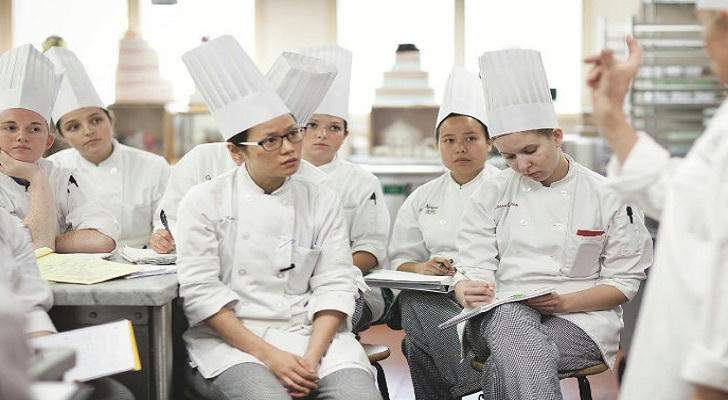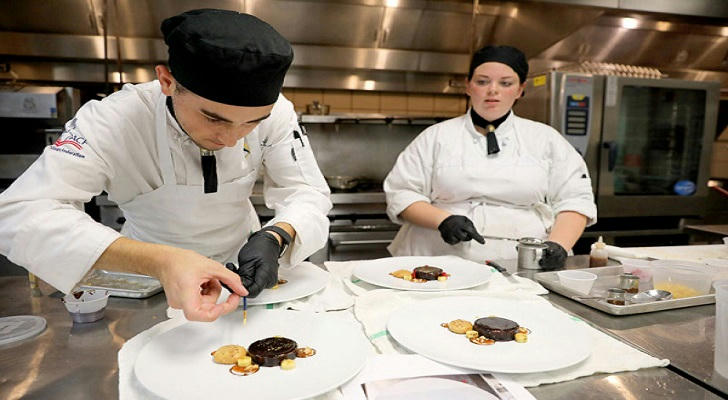Government Support Chef Courses in the U.S.: A Pathway from the Kitchen to Career Advancement
The foodservice industry is a vital component of the global economy, providing millions of jobs and fostering cultural exchange through food. In many countries, especially in the United States, government-support chef training programs have become a powerful tool to support workforce development, address skills shortages, and provide sustainable career paths.
1. What Are Chef Courses?

Chef courses, also known as culinary arts training, provide structured education in food preparation, kitchen operations, safety and sanitation, nutrition, and menu planning. Programs may range from certificate courses lasting a few months to diploma or associate degree programs spanning one to two years. Practical training, often in the form of internships or apprenticeships, is a core component.
Government-support chef courses are offered through vocational schools, community colleges, nonprofit training centers, and special workforce development programs. These programs are aligned with the needs of the hospitality and food service industries and often include recognized certifications such as ServSafe.
2. What Can These Courses Offer?
Participants gain a comprehensive understanding of culinary techniques, food science, health regulations, and kitchen management. Beyond technical skills, courses often emphasize soft skills such as teamwork, time management, and customer service. Graduates are prepared for roles including line cook, prep chef, pastry chef assistant, and even kitchen manager in restaurants, hotels, schools, hospitals, and catering businesses.
3. What Can a Chef Course Bring You?
Upon completion of the program, participants typically experience significant improvements in the following areas:
- Enhanced skill level: Participants acquire various culinary techniques and operational knowledge, which meet the basic requirements for entry-level positions in the food service industry.
- Expanded career opportunities: Graduates can secure positions in restaurants, hotels, school cafeterias, nursing home kitchens, and other food service establishments.
- Increased health awareness: By learning about nutrition and food safety, graduates can improve their own and their families' eating habits.
- Expanded social network: Participants interact with fellow students and industry professionals from diverse backgrounds, broadening their network.
- Entrepreneurial readiness: Students gain an understanding of restaurant operations, which can help them start their own food-related business.
Not only do these programs support individual development, but they also contribute to the economic vitality and cultural diversity of communities.
4. Benefits of Completing a Chef Course
Completing a chef course through a government-support program provides numerous benefits:
- Increased Employability: Graduates enter the job market with practical experience and relevant certifications.
- Career Advancement: Skills gained can lead to promotions or specialized positions in food service.
- Entrepreneurship Opportunities: Some graduates use their skills to start catering businesses or food trucks.
- Lifelong Learning: Training often acts as a stepping stone toward further education or specialization, such as pastry arts or nutrition.
5. Case Studies
Case 1: Job Corps Culinary Program
A participant at the Excelsior Springs Job Corps Center in Missouri completed a culinary arts apprenticeship program in collaboration with William Jewell College. The program provided hands-on training in professional kitchens and helped the participant secure full-time employment as a prep chef at a hotel restaurant.
Case 2: WIOA-Support Training in New York
Through the Workforce Innovation and Opportunity Act (WIOA), a training center in New York partnered with local community colleges to offer culinary certification. One individual, previously unemployed, completed the course and began working in a school cafeteria, earning benefits and a stable income.
6. How to Apply for Government Support Chef Courses
Applying for a government-support chef course typically involves the following steps:
Locate an American Job Center
These centers help identify eligible training programs and offer career counseling.Explore Job Corps Programs
For individuals aged 16–24, Job Corps offers full-time culinary training, including room and board.Contact Local Community Colleges
Many offer chef courses subsidized by federal or state Support (e.g., Pell Grants, WIOA). Check eligibility and course catalog.Look Into SNAP E&T (Employment and Training)
SNAP recipients may access vocational training, including culinary programs, through state-run initiatives.
7. Conclusion

Culinary arts programs are not just about learning cooking skills—they represent a pathway to professional growth, life improvement, and community integration. Supported by government support, these programs offer practical and accessible opportunities for people from diverse backgrounds to acquire valuable skills that contribute to individual success and economic revitalization.
